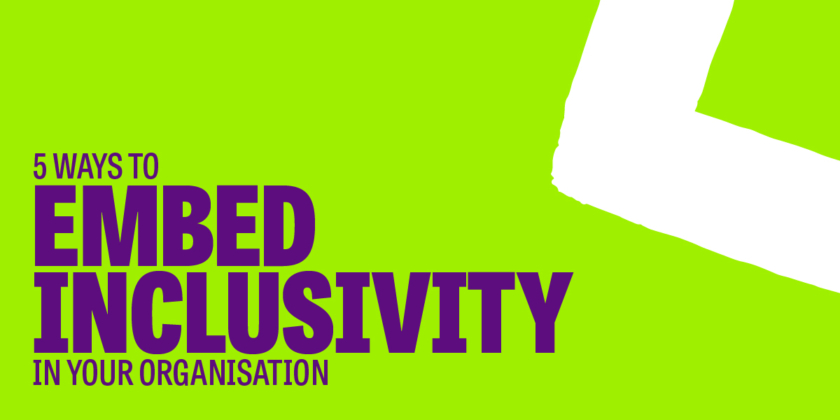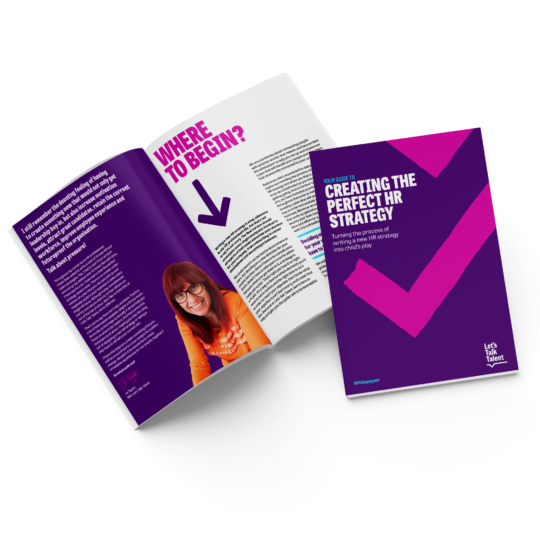If you read my last blog, where I shared some of my highlights from National Inclusion Week, it should have given you some inspiration for your own organisation.
Now that National Inclusion Week has passed and you as HR leaders are returning to business as usual, it’s crucial that the momentum that was built up continues, and we take some of the learnings back into our organisations to ensure that we all become more inclusive. To that end, I thought I’d share a selection of small tips that can set you on the path to becoming more inclusive.
#1: Create mentoring opportunities
Joining a new company, while often exciting, can pose many challenges for inclusivity. A brilliant way to overcome the potential lack of inclusivity is to create mentoring opportunities within your organisation.
Mentoring can build relationships, give your people an informal support system and help reduce staff turnover.
Mentoring can build relationships, give your people an informal support system and help reduce staff turnover. Mentors can be from all over the business, helping to introduce people to new business functions, which is great for employees feeling included and the business being better connected – as well as providing mentors with the opportunity to demonstrate their knowledge and give something back. Fast Company have covered two excellent examples, Netsuite and Paypal, that you can read more on here.
#2: Rotate who runs meetings
We love this one – a simple yet great way to mix things up at work. Meetings are often led by key stakeholders and can often follow the same structure. Why not flip this on its head and get different team members to lead meetings. Leading meetings can help people feel included, aid personal development and present new ways of doing this.
#3: Seek out different perspectives
Listening to the perspectives of people you don’t normally meet with can go a long way to dealing with many forms of inequality and lack of inclusion.
By listening and understanding what others go through, we can gain a deeper understanding of our own privilege and our role in either promoting an inclusive workforce or retaining the status quo.
By listening and understanding what others go through, we can gain a deeper understanding of our own privilege and our role in either promoting an inclusive workforce or retaining the status quo. Committing to meeting people from different backgrounds is not only beneficial for other employees with regards to inclusivity, but also to yourself and the organisation and teams become more cohesive. This doesn’t just apply to working teams and can become a crucial part of the process when leadership teams are making decisions.
#4: Talk about something other than work
It is easy when going into work every day to get stuck in the same routine, speak to the same people and concentrate on work. It takes effort to manifest a relationship with someone you know nothing about in the two minutes you are waiting for your turn with the kettle. One tip we have picked up from this year’s inclusion week is to do exactly this, talk!
Establishing a connection between any colleague will enhance the working relationship and overall communication massively. This does not have to be something hugely significant, perhaps a hobby, a plan for the weekend, but these conversations can erode formal workplace chat and move relationships into more productive friendships. Encouraging your people to have genuine and sincere conversations will ultimately improve workplace communications and inclusivity.
#5: Make the workplace more accessible
Finally, While there are many aspects to consider within inclusion, one of the easiest to forget is ensuring physical accessibility. It’s an easy win for organisations. Especially for large employers, ensuring that your place of work is physically manageable for all employees is crucially important and something that can help inclusivity immediately.
When you next enter the office, think of the places that people regularly use. From the doors you enter to the routes you take, consider how you might do this if you had a physical disability. If the answer is “not that easy” then your company should be doing more to make the building accessible. To make sure the workplace is accessible to everyone regardless of physical capability, follow the 36-inch rule. Mentioned several times last week, this works on the premise that there must be a 36-inch distance for all; walkways, entrances & exits and spaces between walls and desks. This is a simple rule and one easy to follow that can make your office more accessible and in turn inclusive.
From what we’ve seen, it’s clear that companies are paying attention to the suggestions of people from around the UK and working to promote and become more inclusive. Are you interested in becoming more inclusive in the workplace? Let’s talk!

